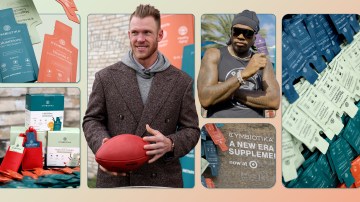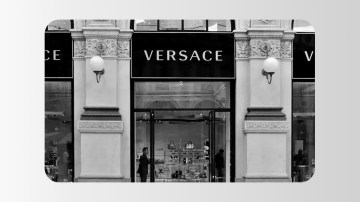With new, sky-high global tariffs announced on Wednesday, beauty and wellness execs are preparing by sharing resources, cutting assortment, assessing supply chains, reserving ingredient shipments, rethinking demand planning strategies and reevaluating retail launches.
“Many brands have been coming to us as of late regarding all these challenges with tariffs,” said Daniel Park, CEO of The DPS, a California-based beauty formulation and manufacturing business that makes products or packaging for Dr. Squatch, Haus Labs by Lady Gaga and many more top brands.
“Many key components, like packaging and raw materials, are [commonly] sourced internationally,” Park said. “Having to shift to an alternative supply chain strategy while minimizing the impact of cost of goods production, lead times and manufacturing capabilities will be a major challenge [for all brands].”
As reported by Glossy, President Donald Trump’s new tariffs include the majority of fashion, beauty and wellness manufacturing hubs like China, Vietnam and Japan, as well as the 27 countries within the European Union, like Italy, France, Germany and Poland. For example, goods coming in from China will have a 54% tariff, Vietnam will land at 46%, and products from the E.U. will be hit with a 20% tariff.
“There is a lot of hardship that is inevitably going to happen, but if we can, as a community, try to navigate it together, I’m hopeful there is a silver lining on the other side,” said Rachel Hirsch, managing partner at venture capital firm Wellness Growth Ventures, which has invested in brands like Cure Hydration, Flaus and BelliWelli.
Hirsch suggests that brands first approach contract manufacturers and suppliers and ask for them to help shoulder the cost.
“It’s not uncommon for manufacturer suppliers to share the burden,” Hirsch said. “Especially if you’re a chunk of their business or they’re a chunk of your business, coming to the table and negotiating again is commonplace. It doesn’t mean that your margins won’t go down or your costs won’t increase, but know that that’s an option: You can negotiate.”
As previously reported by Glossy, this is a top strategy being used by E.l.f. Beauty, as shared by CEO Tarang Amin in February during an earnings call.
This should be part of an overall supply chain assessment, said Kailey Bradt, product formulator and founder of business consultancy firm Syndeo, which counts Pamela Anderson-fronted skin-care line Sonsie in its roster. She’s planning for unexpected supply chain delays tied to overarching geopolitical turmoil and a reduction in consumer confidence in the coming months.
“Now is the time to go to your contract manufacturing partners, your formulators and your product developers to make your formulas futureproof,” Bradt told Glossy. This includes looking at a list of every single raw material in your formulation. “With the rise of transparency and obviously MoCRA, brands have to get access to those — they can’t be shielded from what they’re using anymore, so look at all your raw materials and see which ones are long lead. If they have a very long lead time, look at swapping those, or [stockpile early through a letter of intent].”
A phenomenon Brandt saw during Covid-19, which she believes drove many indie brands out of business, is ingredient earmarking done by large corporations. That is, a brand may ask a manufacturer to pay for a raw material order in advance to ensure it’s available to them through a letter of intent, or LOI.
“You literally write a letter saying, ‘We are willing to take on the liability to purchase this raw material, we’re responsible for it,’” she said. “Sometimes the manufacturer will charge you upfront and then take it off your manufacturing run; other times, they’ll just keep it [for you to use as you need it].”
In a more competitive environment, Brandt believes this will become very common. “I’m telling a lot of my brands to place LOIs for those long-lead raw [materials], especially if they’re active, to keep them in stock at least six months out,” she said. “I’ve seen lead times of 24 weeks on some materials, which is really crazy and obviously going to impact your in-stock scenarios.”
Kyle LaFond, founder and president of contract manufacturer Natural Contract Manufacturing, is recommending a similar action for its customers.
“This year, there’s been so much uncertainty around everything that I’ve told a lot of our clients, ‘As soon as you find whatever components, ingredients or whatever else you need for your product, lock it in, buy it and send it to us,’” he said. “That way, when it’s time to make your production run, we have it there on site, and I’m ready to go. I’ve been encouraging all of our clients to be as proactive as possible.”
The CM specializes in indie brands seeking small minimum order requirements and quick turnarounds, such as a 500 minimum order quantity done in under eight weeks.
Moving to a similar ingredient or active, or swapping ingredients in from a biotechnology supplier, is another strategy. Then, look at different CMs: It’s not bad to have two or three manufacturers that can make the same product for you, Brandt said.
“[Brands] cannot be behind on modernizing their supply chains,” Bradt said. For help, Bradt suggests brands consider fractional experts to share the burden of this endeavor without making a full-time hire. For early-stage brands, equity compensation — around half a percent — is also a great way to access execs without the headcount burden, she told Glossy.
However, swaps out of China, the beauty industry’s largest manufacturer, isn’t always possible, said The DPS’s Park. “China has been mastering the art of manufacturing for so many levels of beauty for decades and decades, to the point where their infrastructure, their resources, their raw material and their manufacturing capabilities of automation have gotten to a point where they’ve earned their right to be leaders in that space,” he said. “To immediately bring that level of manufacturing, where it’s compounded over decades, to the United States is not just an uphill battle, it’s impossible.”
LaFond, whose CM is based in Wisconsin, has been inundated in the past weeks by both American brands looking to move production stateside and European and Canadian brands looking to finish their U.S.-bound goods stateside to avoid some tariff burden.
“Those have been conversations we’ve had more and more frequently, and they’re never fun,” LaFond told Glossy. “It’s a dose of reality that we just will never be able to meet those prices that you’ve been getting for years from China or Indonesia or Thailand or wherever else. We just can’t do it.”
Outside of manufacturing and sourcing, it’s important to prepare for unknowns.
Brandt suggests being realistic about retail launches this year, which can drain budgets and come with unexpected costs and hurdles. “Launching into retail really does take the time and team investment, and if you can’t afford to invest in a retail relationship right now, just don’t do it,” she told Glossy. “It’s not worth damaging your brand reputation.”
Now is also the time to streamline offerings, said Hirsch. “Identify what your consumer really needs and how you, as a business, can prioritize that and get rid of SKUs,” she said.
Hirsch recommends increasing prices only as a final resort after investigating manufacturer, ingredient and supply swaps.
There is also a first-move advantage to bringing manufacturing stateside, Hirsch said. “The best thing people can do is be ahead of the curve,” she said. “If there are loads of manufacturing and ingredient supply that are going to start cropping up [in the U.S.], then being the first mover in that might be a huge advantage.”
Demand planning, no matter where a brand manufactures, is likely to become more challenging in this new environment, said Park, and few brands will come out unscathed. That is, some will sell out without replenishment while others will have too much merch that they’ll have to offload to off-price retailers or discount DTC.
“This is a global situation with global issues, and I think consumers understand that,” Park told Glossy. ”Consumers know that a lot of brands are going to be going through a lot of struggles within their supply chain. I don’t think it is going to be a detriment to say that a brand does not know how to operate at a time like this. … There’s going to be, hopefully, a level of understanding [from consumers].”




